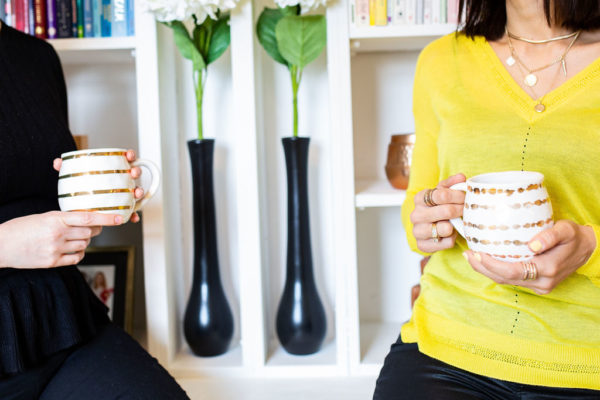We use the word ‘modern’ a lot when we talk about interior design. However, many people tend to use the term synonymously with ‘contemporary’. In fact, modernism (or modern design) refers to a distinct stylistic era, dating from the 1920s to the 1950s. But modern remains popular as a design style, often in conjunction with other styles. In fact, modern home design ideas are on-trend in 2022. Many interior design elements, objects and concepts are making a big comeback. Let’s take a look at some ideas inspired by the era.
What is modern design?
Modern design is informed by the wider concept of modernism. This came about in the early 20th Century, with an emphasis on abstract thinking, functionality, and stark, simple forms. It has roots in Germany, particularly the Bauhaus school, and Scandinavia. Modernism made a profound mark on the art, architecture, and design of the 20th Century, as well as informing film, literature, and music. Modern interior design is characterized by a monochromatic colour palette, clean lines, minimalism, natural materials, and natural light.
How to use modern design in the home
Using clean lines, neutral colours, open-plan spaces, and minimal décor can work better in some places than others, depending on the size and architecture of your home. Modern design values function over form, so a kitchen, for example, lends itself to a modern aesthetic. Having said that, modern design can be incorporated into any room, especially in conjunction with other styles. Let’s take a look at some home design ideas.
Space planning
Planning space is important when using a modern design concept in your home. The key is to maximize open space, with minimal amounts of furniture, allowing for a sense of flow and sparseness. Furniture and accessories should be functional, and not surplus to actual requirements. Form always follows function in modern design, and to use a cliché, less is more. When hiring a residential architecture firm to help with space concepts that are making a big comeback, you can benefit in many ways. A residential architecture firm can help you create a modern design that incorporates timeless design elements. They can also advise you on the best use of space and how to make the most of the space you have while still allowing for plenty of natural light and ventilation. A residential architecture firm can provide valuable input on the latest trends and can help you create a space that is both stylish and functional.
Functional rooms
As we mentioned, functionality is the watchword with modern design, and so bathrooms and kitchens, as essentially functional places, are well suited to the aesthetic.
Bathroom
Many bathroom designers use simple geometric shapes (dominated by squares and rectangles), white and grey colour palettes, natural materials such as stone or wood (the latter for a more Scandinavian feel), and minimal decorations. Contemporary trappings such as backlit mirrors or heated flooring, and luxurious shower heads can be integrated, so you can relax and indulge yourself.
Kitchen
Natural materials and monochrome colours will suit your kitchen. Again, open space is important, with straight lines and simple furniture. Many designers combine wood and stone, be it rustic stone or white marble. Wooden cabinet doors offset stone and metal nicely. If you have space, a simple breakfast bar island with minimal stools means you can combine functionality with socialising. Our kitchens are fast becoming the room we spend the most time in with friends and family.
Furniture
Pieces of furniture that are long and low to the ground suit the modern design aesthetic. Many designers lean towards simple, elegant, and comfortable mid-century modern pieces when it comes to choosing the right chairs, tables, cabinets, and sofas. They are often beautifully made and use neutral materials such as metal and wood, sometimes offset with leather. Choose pieces carefully, and remember that clutter is the antithesis of modern design. Keep it minimal, while still ensuring comfort for you and your guests.
Industrial elements
Modernism stretched from the early 20th Century through to the 1950s, a time of great change in the world. Especially in the late modern period, after WWII, architects and designers began to use more industrial elements such as concrete, iron, steel, and glass. If you like this kind of home design ideas, you can incorporate this side of modern design into your overall concept. Small touches in those materials can accessorize or furnish your home.
Primary colours
We’ve emphasized the monochromatic palette many associate with modernism. But some of the major proponents of modernism, such as the Bauhaus and De Stijl movements, favoured strong, primary colours in their designs. Generally, this would consist of one primary colour dominating the interior, using either accent furniture, rugs, or artwork. However, primary colours should be used sparingly, especially in more compact spaces, as they may dominate, and overshadow the rest of the design.
Forget relief
Modern design eschews ornate architectural designs like moulding and cornices. Smooth work surfaces in the kitchen, ceilings, walls, and cabinets all add to the overall minimalism associated with modernist interiors. And definitely lose the textured wallpaper – that stuff will go a long way to undermining your entire design concept. Smooth, sleek walls, adorned with sparse decorations or artwork, are far better.
Modern design has made a comeback in recent years, and looks set to stay on trend for the rest of 2022. Think about working it into your home redecoration, and keep it uncluttered!

